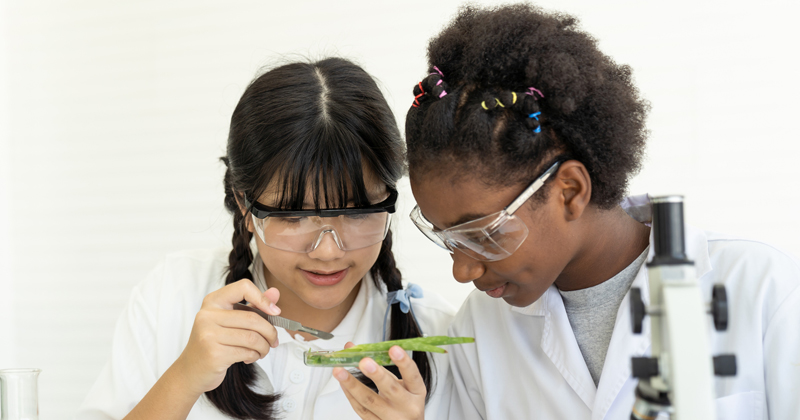Nowhere is the educational challenge of creating equal opportunities for children to fulfil their potential greater than in science. Research tells us that children face barriers in STEM due to their socioeconomic background and gender stereotyping by the age of seven, limit not just their academic outcomes but their future career prospects too.
That means diversity and inclusion are key challenges when it comes to succeeding in STEM, starting with tackling gender and class-based stereotypes from the start in primary schools. On that basis, our diverse school has spent the past year reviewing our science curriculum to identify and overcome barriers to engagement.
Here are some of the lessons we’ve learned and actions we’ve taken to create a context where all pupils feel included and celebrated in science.
Biases are barriers
Many of us have internalised biases which lead us to make assumptions, including about what a scientist ‘looks like’. This question often conjures images of an Albert Einstein-esque figure among children, parents and carers, and even teachers can automatically and subconsciously lean into white male scientist tropes that are common in the media.
Recognising and challenging these biases is the first step to overcoming them. By improving awareness of scientists from different genders, backgrounds and abilities and celebrating them in school, we can show that anyone can make a positive difference to science and the world around them.
But bias doesn’t stop there. As a teacher, it’s also vital to recognise and overcome any unknowing biases that can influence our expectations of a child’s passions or abilities. We must set fair and high expectations of all children and encourage them to dream big, innovate and explore their unique areas of interest.
Curriculum content matters
Ensure lessons are filled with a diverse range of scientific role models and real-life-based practical activities. Famed scientists such as Marie Curie and Professor Stephen Hawkins are brilliant to mention, but there are many more lesser-known figures who have made extraordinary contributions to science.
We talk about Chien-Shiung Wu and Mae C. Jemison, who deserve a place in the textbooks. Last term, we furthered our learning in year 5 by exploring Dr Maggie Aderin-Pocock and her work as a space scientist. Widening our scope of reference has sparked pupils’ curiosity and helped them to picture themselves in the industry.
We have also incorporated more opportunities for pupils to lead practical investigations that are based in a real-world context and aligned to their personal interests. For example, we used the free CREST Awards ‘Plant Detectives’ activity pack, which encourages children to investigate where everyday plants come from and how they thrive. This has tremendously boosted their self-confidence.
Community is power
As science teachers, we can continually challenge misconceptions by reinforcing the message that anyone has the potential to be a scientist, but it helps to have some back-up from the local community.
By speaking to local businesses, organisations, parents and carers working in STEM, we were able to identify a number who were willing to deliver workshops in the classroom. This approach resonated with our children, who loved that people like them were making strides in science and were surprised by the opportunities available in their community.
Diversity doesn’t sleep
Events like British science week and Black history month are important springboards, but reinforcing pupils’ understanding of the wonderfully diverse world of science is a year-round endeavour. Making use of the British Science Association’s CREST grants has helped us fund practical classroom activities and take pupils on extracurricular trips that might not have been possible otherwise, but a lot can be achieved on a shoestring.
Every child can experience the joy and excitement of seeing and understanding the world in a scientific way. By challenging stereotypes early on and exposing our pupils to different role models and methods of learning, we can boost engagement and representation in science and show ourselves equal to the educational challenge we face.












Your thoughts